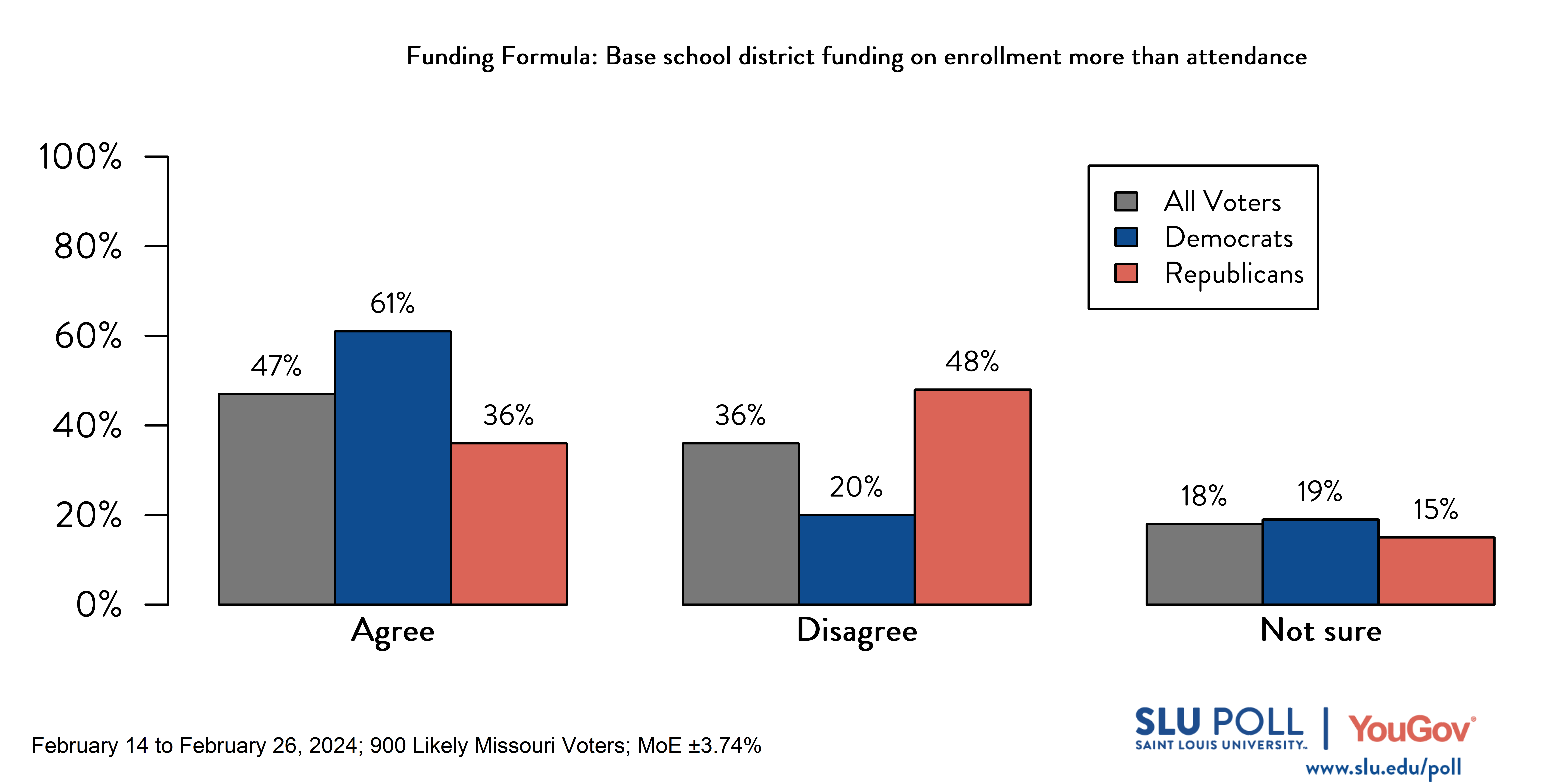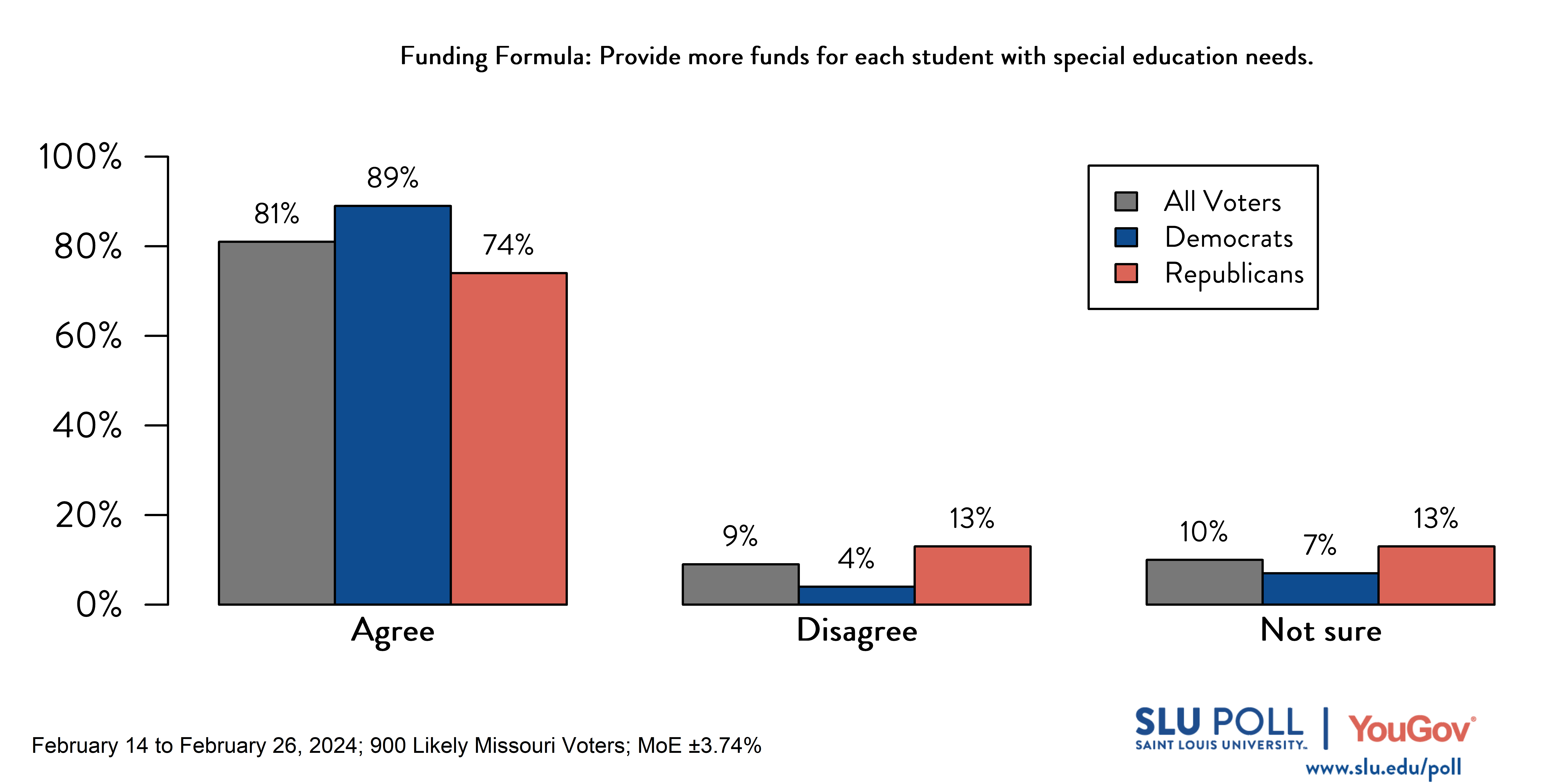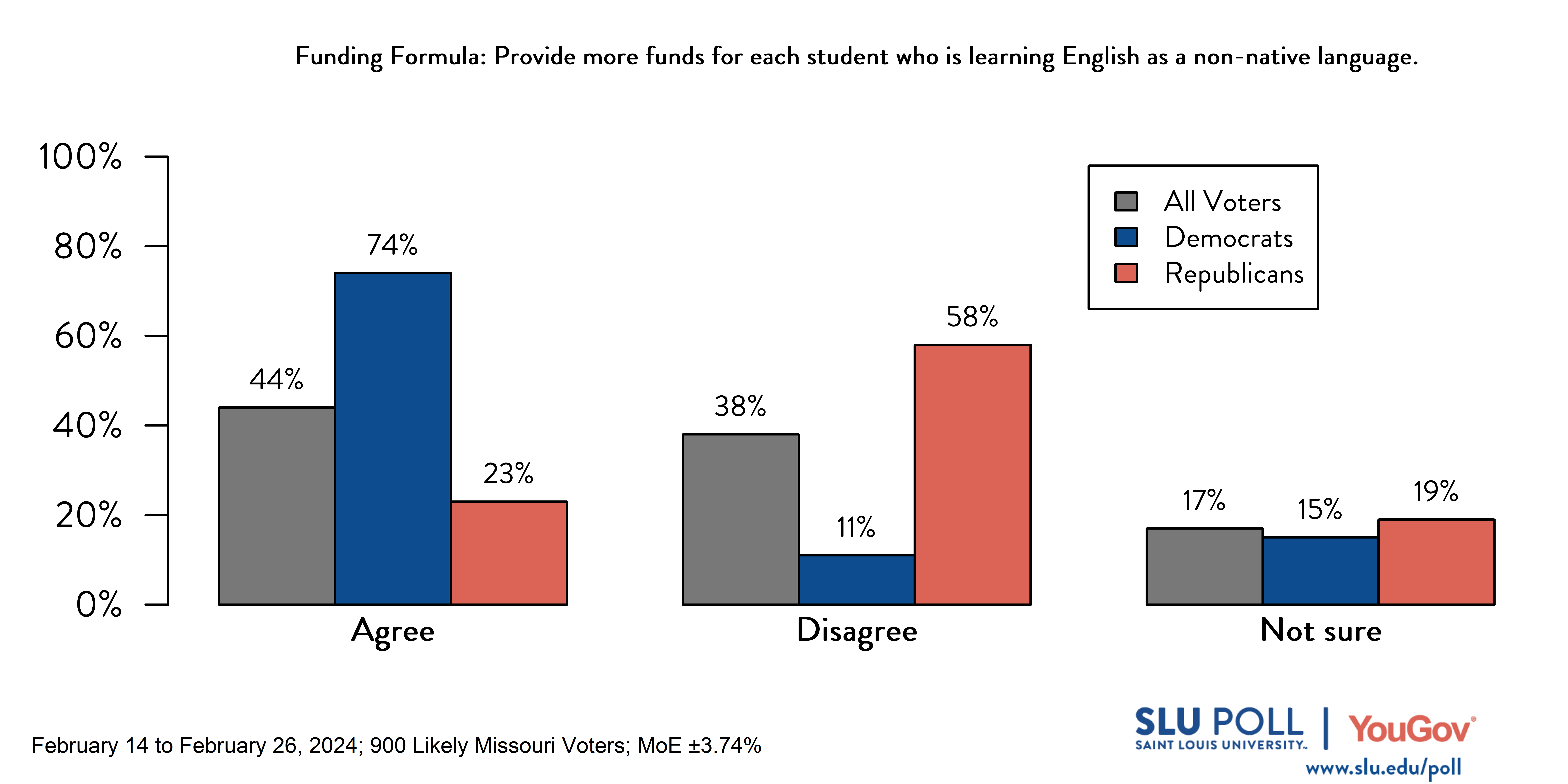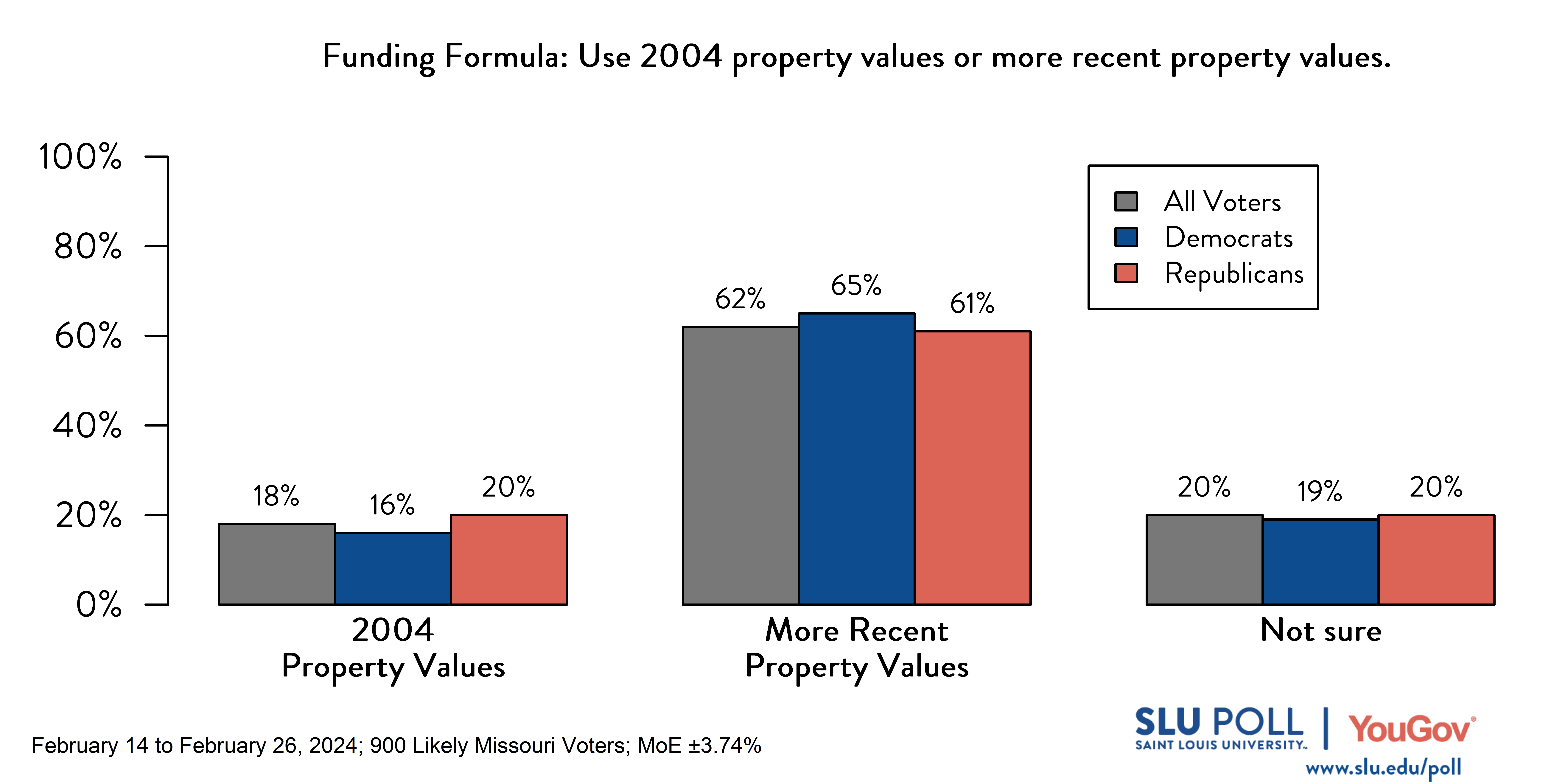SLU/YouGov Analysis: Missouri Voters Largely Support Changes to School Funding Formula
SLU’s Ashley Burle, Ph.D., provides expert analysis on the latest SLU/YouGov Poll results as they pertain to the state’s school funding formula.
Public schools in Missouri are funded using a combination of local, state and federal funding. State funding — which comes from general state revenues such as income taxes, sales tax, gaming, lottery, and other miscellaneous taxes — is distributed to public schools using a funding formula that considers specific district factors. The formula is meant to ensure adequacy (i.e., the minimum cost of educating a student is met) and equity (i.e., fairness) by providing additional funding to districts that have a harder time raising local property taxes and who have children living in poverty, with special education needs, or who are learning English.
Missouri’s current public school funding formula was built in 2005, and a number of its features have been criticized.
“I think we need to update (the formula), but that’s a pretty heavy lift, and not very many people understand it," said Rep. Brad Pollitt, a Sedalia Republican who chairs the House Committee on Elementary and Secondary Education.
Missouri education leaders have argued the formula has not kept up with inflation, and in June 2023, 35 school boards passed resolutions asking the State Board of Education to commission a study of the formula.
One key critique of the formula is its use of average daily attendance to determine funding rather than the total number of students enrolled in the district, which critics argue penalizes poorer schools that typically have lower attendance.
The February 2024 SLU/YouGov Poll asked Missourians about their views on enrollment versus attendance as a base of school funding. A plurality of Missouri voters (47%) agreed school district funding should be based on enrollment more than attendance, a divergence from the current funding formula structure, while 36% disagreed and 18% were not sure.
Results differed along party lines, with more Democrats agreeing than Republicans (61% vs. 36%) that the funding formula should be based on enrollment. Differences in voter opinions also varied based on nearly all demographics. A majority of voters aged 18-44, non-White voters, and voters with higher incomes ($50,000+) agreed school district funding should be based on enrollment, as did those with some college and post-graduate education and Missourians from the northwest region.
Another key battleground of the funding formula is its weighting of students who typically cost more to educate, such as low-income students, students with special education needs, and students learning English. The current funding formula only provides extra funding for these students if a district exceeds a threshold for that population of students; districts with student populations who fall anywhere below the threshold do not receive any additional funding.
Missouri voters again appear to disagree with this current operation of the funding formula. Sixty-three percent of voters agreed the funding formula should provide more funds for each student who receives free and reduced-priced lunch (i.e., low-income students). Similarly, 81% of voters agreed the formula should provide more funds for each student with special education needs. Both results were supported across all voter demographics.
Missouri voters appear less supportive of the funding formula providing additional funds for students learning English as a non-native language (i.e., English-language learners). Forty-four percent of voters agreed with additional funding, while 38% disagreed. Democrats were more likely to support providing more funds for English-language learners than Republicans (74% vs. 23%). A majority of voters aged 45+, voters with a high school diploma or less, and voters in the northwest and southeast regions of the state also disagreed with providing more funds for English-language learners.
An additional area of debate for the funding formula is its “local effort” calculation, which is an estimate of how much money a district receives from local sources such as property taxes. Importantly, the funding formula subtracts the calculated local effort to determine the final amount of state support. The current calculation of local effort is fixed and based on 2005 property values, a point researcher James Shuls, Ph.D., argued leads to greater inequalities.
A majority (62%) of voters indicated they believe more recent property values, such as those within the last five years), should be used when making local revenue estimates. This result was fairly consistent across voter demographics, with the exception of race. While a plurality of Black voters agreed more recent property values should be used, nearly 30% of Black voters were unsure. This may indicate Black voters are worried about how the use of more recent property values will affect funding for the schools their children attend.
Overall, the results of the February 2024 SLU/YouGov Poll suggest voters support several changes to the Missouri funding formula, many of which align with prior opinions of its flaws.
“We have a large portion of students across the state who experience some form of economic disadvantage. It’s really important that the state funding formula serve those kids effectively,” said Cameron Anglum, Ph.D., an assistant professor of education policy and equity at the Saint Louis University School of Education.
This analysis is based on data from the February 2024 SLU/YouGov poll and reflects the opinion of the author.






















